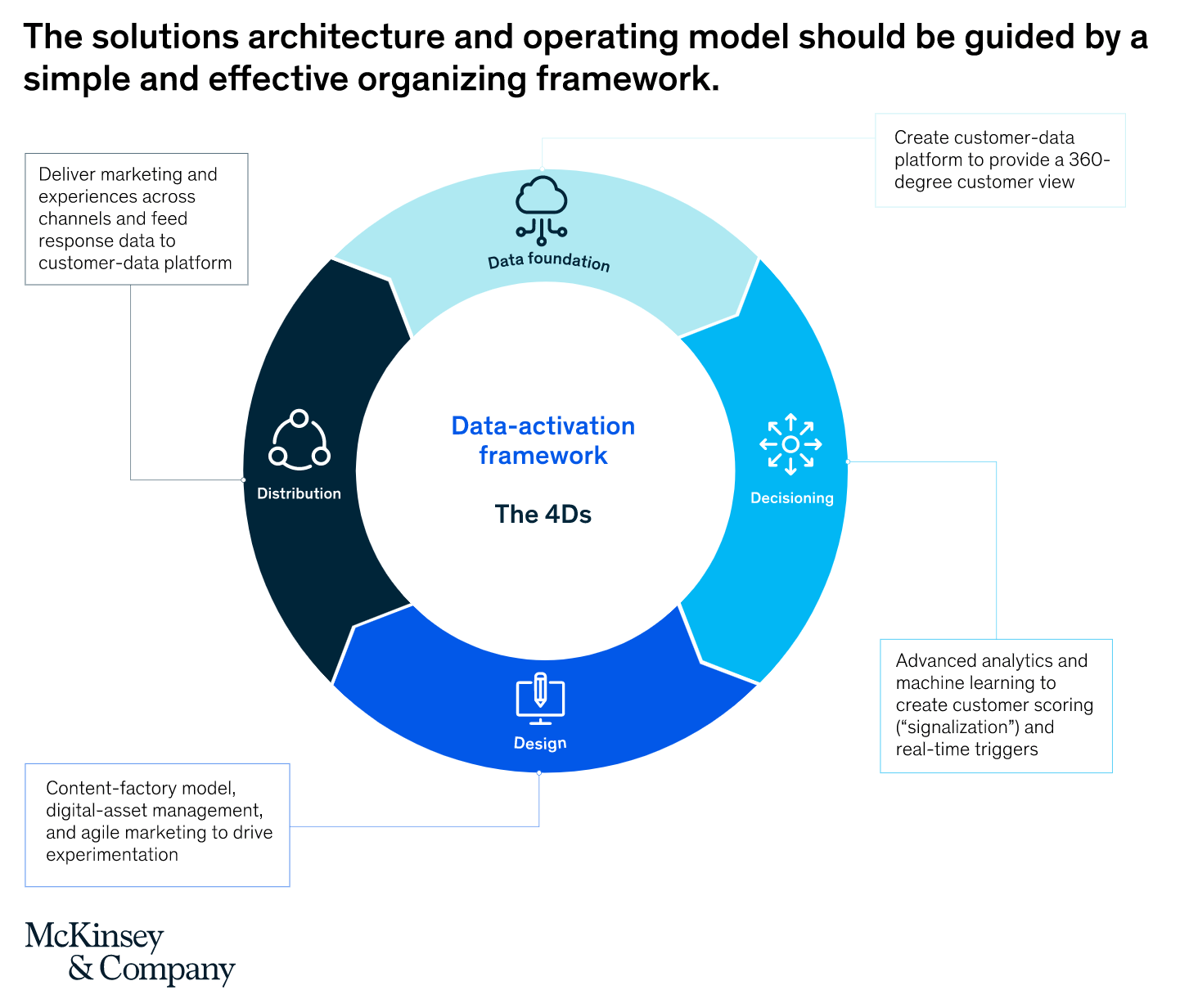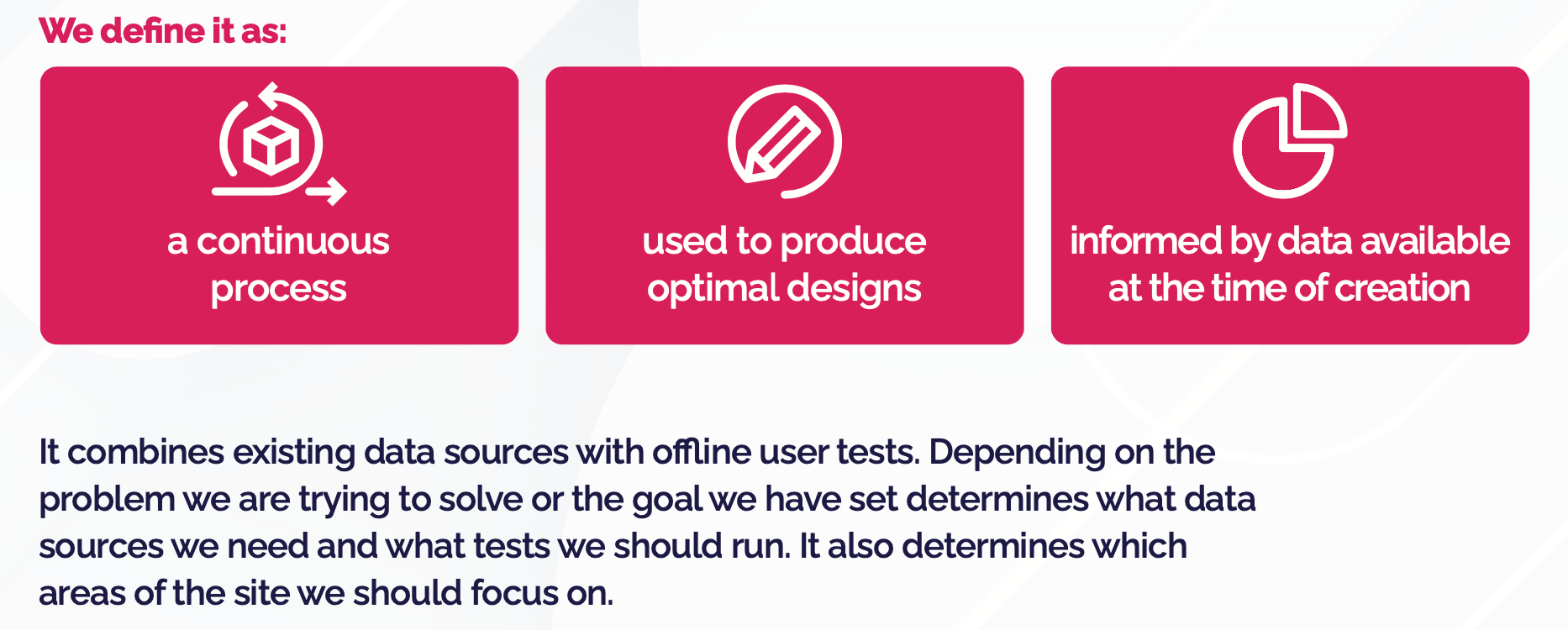How to track digital performance with thank you pages
What are thank you pages, and why are they important for monitoring performance? Find out more about thank you page best practices.
Read moreAre you using Data-led-Design to grow your brand? Dr. Dave Chaffey delves into what techniques you should be using to turn user data into intelligent web design.
 Does your business use Data-led-Design? I’m sure you use it to some extent since part of the power of digital marketing is that we can improve our results from harnessing the insight created as our audiences interact with our online communications. But, it’s like me asking, do you use Google Analytics or Adobe Analytics? All businesses will have these installed, but they may not be maximising their use of them to improve business results…
Does your business use Data-led-Design? I’m sure you use it to some extent since part of the power of digital marketing is that we can improve our results from harnessing the insight created as our audiences interact with our online communications. But, it’s like me asking, do you use Google Analytics or Adobe Analytics? All businesses will have these installed, but they may not be maximising their use of them to improve business results…
We can help here since, at ClickThrough Marketing, our mindset and processes for improving the effectiveness of media spend and digital experiences have always sought to maximise the use of insight. To help you make improvements in the year ahead we have a new resource to improve your approach to make the most of the insight available.
Al Rowe, our Director of Conversion Strategy, has created a new guide to data-led design. This details the techniques and tools we use based on many years of applying a range of tools and evolving our data-driven marketing processes. [You can download here].
While many see the value in data-driven marketing, it’s clear that businesses aren’t fully leveraging insight to improve digital experiences. Adobe’s 2021 digital trends report highlights the many barriers that may be holding businesses back.

Following a data-led design process can address many of these barriers while improving data-driven marketing capabilities and skills since it helps provide a focus for innovation through CX prioritization while improving data and customer insight quality.
In the guide, the aim of Data-led-Design is to improve the effectiveness of websites, although Al points out it can be much broader than this. Data-led-Design is based on these pillars:

You’re maybe thinking, ‘so it’s like Conversion Rate Optimization (CRO)’. Certainly, we do recommend CRO techniques, but limiting your activities to CRO is limiting your opportunity. Focusing just on conversion rate is dangerous since it is only one measure and its value varies widely depending on the audience segments you are considering. Al suggests how it can be useful to exclude some interactions to focus your improvements.
In my books, I recommend using the VQVC mnemonic to prompt marketers to review improvements more holistically by considering the Volume, Quality, Value and Cost of interactions. In his guide, Al shows how to review the cost-benefit for data-led design by reviewing your conversion funnel efficiency. He suggests reviewing different scenarios for reviewing investing some of your media budget in CRO to improve Return on Advertising Spend (ROAS).
To me, what’s most important to success in data-led design is for managers to ensure their marketing team and agency is following a continuous process, so that there is an ongoing programme of tests and improvements which review the entire customer journey including different types of media investments. The mindset is Test-Learn-Refine!
Otherwise, I’ve seen that there is a tendency for businesses to run ad-hoc AB Tests, on a limited number of landing pages, missing the opportunity to improve the performance across the whole customer journey. Certainly, tremendous improvements are possible through a focus on individual pages as Al’s guide shows through work ClickThrough Marketing completed for Mountain Anvil, a property company that saw leads double through a series of home page tests.
Apart from a continuous process, what’s also needed in larger organisations that want to improve their data-driven marketing approach is an organizing framework and operating model that is customised to their business. The 4Ds data activation framework suggested by McKinsey shows what the organizing framework needs to consider, particularly for personalisation. This also reminds us that as well as introducing more agile marketing based on structured testing, a long-term data strategy must seek to harness machine learning to identify opportunities to improve design across complex customer journeys. This is also a technique that ClickThrough Marketing is actively implementing for some larger clients which has uncovered improvements that hadn’t been identified by digital analysts.
Of course, the foundation of data-led design is making the most of your core analytics tools whether that’s Google Analytics or Adobe Analytics combined with the different AB testing tools that Al recommends in the book and webinar. But another key aspect of Data-led-Design is working hard to support design improvements via customer insight. These insights can sometimes be missed, so Al recommends the tools we use to gain insight and why. He also explains some other simple techniques such as the Five-second flash, First-click and Preference tests which are useful for eliciting consumer insight.
Read about data-led design in more detail in Al's eBook. Available for free here.
More articles you might be interested in:

What are thank you pages, and why are they important for monitoring performance? Find out more about thank you page best practices.
Read more
Google sets new standards for links and content, new functionality emerges in Analytics and Search Console, and new tool Neurons hits the world of...
Read more
Welcome to the latest round-up of all things digital. This is where we look at the latest updates in the world of PPC, SEO, Content and International...
Read more.jpg)
Creating conversion-optimised PPC campaigns start at strategy planning. Do you know how you can maximise the return on your ad investment? Dave...
Read more.jpg)
Wondering how to apply conversion-centric marketing to your advertising strategies? Dr. Dave Chaffey explores why this is essential for growing...
Read more
Episode Six of The Assorted Digital Ramblings Podcast is now live! Learn about Conversion Rate Optimisation with guest Al.
Read more
Heard the term CRO thrown about and not sure what it means? Cameron Hadley takes us through some commonly asked questions on conversion rate...
Read more
CRO is the process of optimising your site or landing page towards conversions. Find out more about how to identify if your site needs the CRO...
Read more